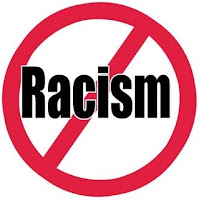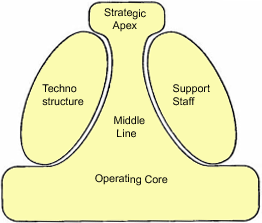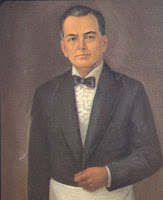Please read these carefully
1. Admission to the Exam Room
a) You must bring the following to gain entry to the exam room:
b) You should be at your desk ten minutes before the start of the reading time for each exam. It is your responsibility to:
c) The doors to the exam room close 35 minutes after the start of the exam. You will not be allowed to enter the exam room after this time unless you have the permission of an invigilator.
2. Completing the front cover of your answer book
a) You will be issued with an answer book at the start of the exam.
b) You must write your candidate number on the front of your answer book. Your candidate number is on your admission advice. The invigilators will tell you when and where to complete these details on your answer book.
3. Completing your answer book
a) Write your answers in blue or black pen. You may use a pencil to draw diagrams or graphs.
b) Begin the answer to each question on a new page and write the question number in the boxes provided at the top of the page. You must clearly show the marker where a question is continued later in the book.
c) Any rough workings must be included in your answer book and then crossed through with a single line.
d) Supplementary answer books will only be handed out when you have completed your initial answer book. You must state that you are also using a supplementary answer book on the front cover of your answer book and ensure they are fastened together before collection at the end of the exam. November 2011 2
4. Permitted exam materials
a) Any personal belongings such as briefcases, mobile phones, books, dictionaries, revision notes or written material of any kind must be left in an area designated by the invigilators. They should not, under any circumstances, be left near your desk.
b) You must switch off all mobile phones prior to entering the exam room.
c) You may bring a bottle of water into the exam room.
d) Calculators must be clearly visible on your desk so that invigilators can inspect them.
We allow the following types of calculator:
- scientific calculators, including those with basic programming functions
- those with standard memory functions
- solar powered (at your own risk).
We do not allow the following types of calculator:
- those with alpha-numeric keyboards (an alphanumeric display of stored data – including text- equations or
alphanumeric formulae)
- personal organisers
- checklists and memo pads
- those that make a noise
- those that are programmable from other sources by detachable modules, barcodes, tapes or cards
- those that feature graphical displays (can often be identified by model types that end in the letter ‘G’ and
typically have larger screens)
- those that do not have their own internal power supply
- those that allow text to be saved in their memory
- calculator functions on watches or mobile phones
- those with symbolic algebraic capability.
5. Reading time
6. Conduct during Exams
a) If you need to leave the room to go to the toilet you must be accompanied by an invigilator.
b) Eating, unless for medical reasons, is not permitted in the exam room.
c) Smoking is not permitted.
d) If you contravene exam rules by, for example cheating, helping another candidate to cheat or by having materials or items with you that could give you an unfair advantage, you will be reported to CIMA’s Examinations and Assessment Oversight Panel. This is likely to result in your exam paper being voided. It may also result in CIMA taking disciplinary action against you. The following are deemed to be examples of contravention of exam rules:
f) Your answers must be written in the answer book. This includes answers to the objective questions. Any answers written on your question paper will not be marked.
g) Do not write any personal communications to the examiner or marker in your answer book. Any such
communication, particularly where it contains vulgar or threatening language will be reported to the
Examinations and Assessment Oversight Panel.
7. At the end of the exam
a) You must stop writing as soon as you are told to do so. If you do not stop writing when told, the invigilator will report your actions to CIMA.
b) You must ensure that you fasten all supplementary answer books and pieces of graph paper inside your answer book before the invigilator collects it.
c) At the end of the exam you must stay in your seat until all answer books, question papers and any other materials provided have been collected by the invigilators.
d) If you wish to leave the exam before the normal finish time you must notify the invigilator who will collect your answer books, question papers and any other provided materials before permitting you to leave the exam hall. You cannot leave the exam room during the first hour and 20 minutes or the final 15 minutes of the exam.
8. Liability
CIMA will not be liable for any loss of, theft of or damage to personal belongings left in or outside the exam room. Any personal items brought to the exam are done so at the owner’s risk CIMA Contact Centre.
If you need more information, please contact our staff at the CIMA Contact Centre.
Email: cima.contact@cimaglobal.com
Phone: +44 (0)20 8849 2251
Fax: +44 (0)20 8849 2450
CIMA Contact
26 Chapter Street
London SW1P 4NP
United Kingdom
www.cimaglobal,com
If you are based outside the UK you might find it easier to contact your local office
1. Admission to the Exam Room
a) You must bring the following to gain entry to the exam room:
- Your admission advice which you need to download from the CIMA website. Students sitting exams in Sri Lanka must also download their attestation form from the CIMA website and have it signed. This will not be posted to you.
- Identification showing your photograph, with your name printed and your signature.
- You should also bring a blue or black pen, a pencil and a calculator
b) You should be at your desk ten minutes before the start of the reading time for each exam. It is your responsibility to:
- Make sure you sit at the correct desk by checking that your desk number matches the desk number on your admission advice for that paper. Please note that your desk number may change with each paper you sit.
- Fill in the attendance slip before the start of each exam. This is a two-part slip – the bottom half is your receipt as confirmation that you attended the exam. Retain the completed receipt for four months from the date of the exam.
c) The doors to the exam room close 35 minutes after the start of the exam. You will not be allowed to enter the exam room after this time unless you have the permission of an invigilator.
2. Completing the front cover of your answer book
a) You will be issued with an answer book at the start of the exam.
b) You must write your candidate number on the front of your answer book. Your candidate number is on your admission advice. The invigilators will tell you when and where to complete these details on your answer book.
3. Completing your answer book
a) Write your answers in blue or black pen. You may use a pencil to draw diagrams or graphs.
b) Begin the answer to each question on a new page and write the question number in the boxes provided at the top of the page. You must clearly show the marker where a question is continued later in the book.
c) Any rough workings must be included in your answer book and then crossed through with a single line.
d) Supplementary answer books will only be handed out when you have completed your initial answer book. You must state that you are also using a supplementary answer book on the front cover of your answer book and ensure they are fastened together before collection at the end of the exam. November 2011 2
4. Permitted exam materials
a) Any personal belongings such as briefcases, mobile phones, books, dictionaries, revision notes or written material of any kind must be left in an area designated by the invigilators. They should not, under any circumstances, be left near your desk.
b) You must switch off all mobile phones prior to entering the exam room.
c) You may bring a bottle of water into the exam room.
d) Calculators must be clearly visible on your desk so that invigilators can inspect them.
We allow the following types of calculator:
- scientific calculators, including those with basic programming functions
- those with standard memory functions
- solar powered (at your own risk).
We do not allow the following types of calculator:
- those with alpha-numeric keyboards (an alphanumeric display of stored data – including text- equations or
alphanumeric formulae)
- personal organisers
- checklists and memo pads
- those that make a noise
- those that are programmable from other sources by detachable modules, barcodes, tapes or cards
- those that feature graphical displays (can often be identified by model types that end in the letter ‘G’ and
typically have larger screens)
- those that do not have their own internal power supply
- those that allow text to be saved in their memory
- calculator functions on watches or mobile phones
- those with symbolic algebraic capability.
- You cannot use your calculator instruction booklet during the exam. It is your responsibility to check the functionality of your calculator before you use it in the exams.
- Please remember that, in your answer book, you must show the steps you took to arrive at your answer.
- For more information on calculators please visit our website at:
- www.cimaglobal.com/Documents/ImportedDocuments/guidance_on_calculators.pdf
5. Reading time
- 20 minutes reading time is added to the three hours exam time for all exam papers.
- During the 20 minutes you can:
- make notes on or highlight your question paper.
- You are not allowed to:
- write in your answer book
- use your calculator.
6. Conduct during Exams
a) If you need to leave the room to go to the toilet you must be accompanied by an invigilator.
b) Eating, unless for medical reasons, is not permitted in the exam room.
c) Smoking is not permitted.
d) If you contravene exam rules by, for example cheating, helping another candidate to cheat or by having materials or items with you that could give you an unfair advantage, you will be reported to CIMA’s Examinations and Assessment Oversight Panel. This is likely to result in your exam paper being voided. It may also result in CIMA taking disciplinary action against you. The following are deemed to be examples of contravention of exam rules:
- Having any book, notes or documents on you at any time during the exam November 2011 3 Having any book, notes or documents in a situation which suggests you could have used them during the exam
- Talking to, copying from, or in any way communicating with, another candidate
- Using a mobile phone, including the calculator function
- Leaving the exam room without the permission of an invigilator
- Removing answer books and/or question papers, whether used or blank, from the exam room, during or after the exam.This list is not exhaustive.
f) Your answers must be written in the answer book. This includes answers to the objective questions. Any answers written on your question paper will not be marked.
g) Do not write any personal communications to the examiner or marker in your answer book. Any such
communication, particularly where it contains vulgar or threatening language will be reported to the
Examinations and Assessment Oversight Panel.
7. At the end of the exam
a) You must stop writing as soon as you are told to do so. If you do not stop writing when told, the invigilator will report your actions to CIMA.
b) You must ensure that you fasten all supplementary answer books and pieces of graph paper inside your answer book before the invigilator collects it.
c) At the end of the exam you must stay in your seat until all answer books, question papers and any other materials provided have been collected by the invigilators.
d) If you wish to leave the exam before the normal finish time you must notify the invigilator who will collect your answer books, question papers and any other provided materials before permitting you to leave the exam hall. You cannot leave the exam room during the first hour and 20 minutes or the final 15 minutes of the exam.
8. Liability
CIMA will not be liable for any loss of, theft of or damage to personal belongings left in or outside the exam room. Any personal items brought to the exam are done so at the owner’s risk CIMA Contact Centre.
If you need more information, please contact our staff at the CIMA Contact Centre.
Email: cima.contact@cimaglobal.com
Phone: +44 (0)20 8849 2251
Fax: +44 (0)20 8849 2450
CIMA Contact
26 Chapter Street
London SW1P 4NP
United Kingdom
www.cimaglobal,com
If you are based outside the UK you might find it easier to contact your local office













































































